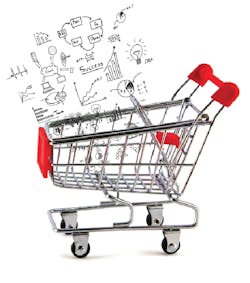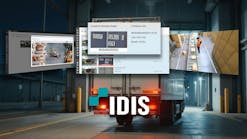There have been a lot of changes in the retail security meeting room — from who’s involved to what’s being talked about. It is generally not just the security and LP team in the room these days, as there are other internal stakeholders that include LP professionals, executives, store operations leads and other decision makers — all led by one, integral team member who has overall increased visibility in mind. And today’s conversation is likely focused on the cloud, big data, omni-channel and mobility, and how they impact the overall security strategy.
The conversation and the players involved shifted because the world of retail technology and loss prevention (LP) is not the same as it once was, due to a change in how technology works, along with its expanded capabilities and in-store customer behaviors that have drastically changed from even 10 years ago.
The cloud, big data, omni-channel retailing and mobility are just four of the big trends that are making immediate impacts on the traditional LP and security technology strategy and investment approach in retail security. These are very important shifts to consider as they not only change how customers shop and place new demands on service, it changes the way retailers invest in and leverage new and more traditional forms of in-store technology. Understanding all the ways these solutions can work both separately and together can improve ROI and drive overall store performance to new levels.
The Cloud
The proliferation of the cloud and its promise of speed and agility is a key driver in technology changes in the retail space. Video as a service (VaaS), or hosted video, is helpful for companies large or small that that can ill afford to spend time and resources managing video hardware, or that have facilities worldwide and need to be able to observe several locations simultaneously.
With its better analytics quality and test-and-learn environment capabilities, retailers are working with vendors to have the value of video more closely related to sales improvement and business operations; in fact, the percent of video for only security uses is shrinking.
Since the video systems allow retailers to capture, save and export video segments, they can offer key insights into specific issues, like what time of day most incidents occur, whether employees are complying with corporate policies, or if certain times of the day require more staff support. These are important attributes of an effective VaaS solution — enabling the retailer to gather business intelligence about products and operations themselves, not just foot traffic and conversion rates.
Big Data
Newer technologies like hosted video produce a lot of important information for retailers to analyze, which begins the “big data” discussion. Big data means a lot of things, but essentially it means better, deeper and more accurate information. More information can mean better decisions and improved results, if used intelligently and analyzed correctly.
One solution combines technologies like electronic article surveillance (EAS) and radio frequency identification (RFID) to help retailers have this more in-depth analysis. The two technologies have been around for a long time, and are well-known throughout the industry as separate, effective solutions but have now evolved to create another cost-efficient solution that has retailers seeing more detail at the item level. Using this solution, they are able to gather new data sets that offer real-time intelligence about everything from what has gone missing to how much is needed on the shelf.
With new dual EAS and RFID technology tags that deliver both the security and inventory visibility, retailers can use these well-known technologies together to increase inventory accuracy and understand behaviors even better. Ensuring inventory accuracy along with loss accuracy is a key source of managing shrink for retailers, and by focusing on efficient solutions like the dual technology tag, they can effectively minimize costs by maximizing visibility.
Omni-Channel Retailing and Mobility
In addition to analyzing store performance data from technologies in-store, retailers need to also use the technologies to better understand how to manage a new breed of connected customer. These customers shop online, or on their devices, or in the store — sometimes more than one at the same time — and they are often referred to in the retail industry as omni-channel. These customers are more equipped throughout the store, and they expect more immediacy in their transactions and in-store experiences. For them, the store is a sort of social media hub where they can let other customers know about any negative experiences immediately; thus, the service they are getting in-store is critical.
Mobility can deliver pricing transparency like never before, and likewise offer retailers the chance to delight customers in new ways and retain them with customized experiences. There is a blurred line between buying online and buying in traditional brick-and-mortar stores, and this line is very important to marketing, merchandising and operations. It is also a new focus of LP and security.
Using retail solutions, such as the dual technology tags or hosted video, to better understand in-store customer buying behaviors is key, and the time is now for retail stores to be more strategic with their investments. The solutions being created by security providers and technology manufacturers are improving the omni-channel experience to include customer satisfaction and business operations, in addition to solving traditional LP problems.
With new mobile POS innovation for both transactions and EAS tags, and other ways to increase purchases throughout the entire store, the retailer can establish a more satisfied customer that will generate more sales.
Bringing it All Together
All of these separate solutions in a retail store become even more powerful when integrated into one system — and perhaps one conversation across the retail enterprise — instead of being evaluated or considered individually.
In the past, loss prevention executives purchased technology like EAS systems and surveillance cameras as standalone tools; however, now it is important to show retailers why utilizing solutions like video surveillance systems with analytics can impact their business. These solutions can give them the ability to understand everything from when to refill a coffee pot to traffic counts and their conversion rates. Analytics and integrated systems can help stores evaluate data to elevate their enterprise visibility and adapt more rapidly to the needs of their customers, which means anything from improved merchandise availability to more mobile empowered employees on the floor.
This is an innovative and important time for the retail and LP industries. Strategies are evolving with the changing demands, and figuring out which solutions solve which problems is important. If a retailer works closely with vendors and integrators to pick complementary inter-operational solutions, they can receive a better overall picture into how these tools work together to offer broader visibility into the entire business of creating improved store performance. LP and retail solutions that work together to solve overall business efficiencies is what’s next, and retailers need to stay on the forefront of it all to keep up with the changing tides.
Steve Sell is Director of Marketing, Retail, for Tyco Integrated Security. To request more info about the company, please visit www.securityinfowatch.com/10761019.


